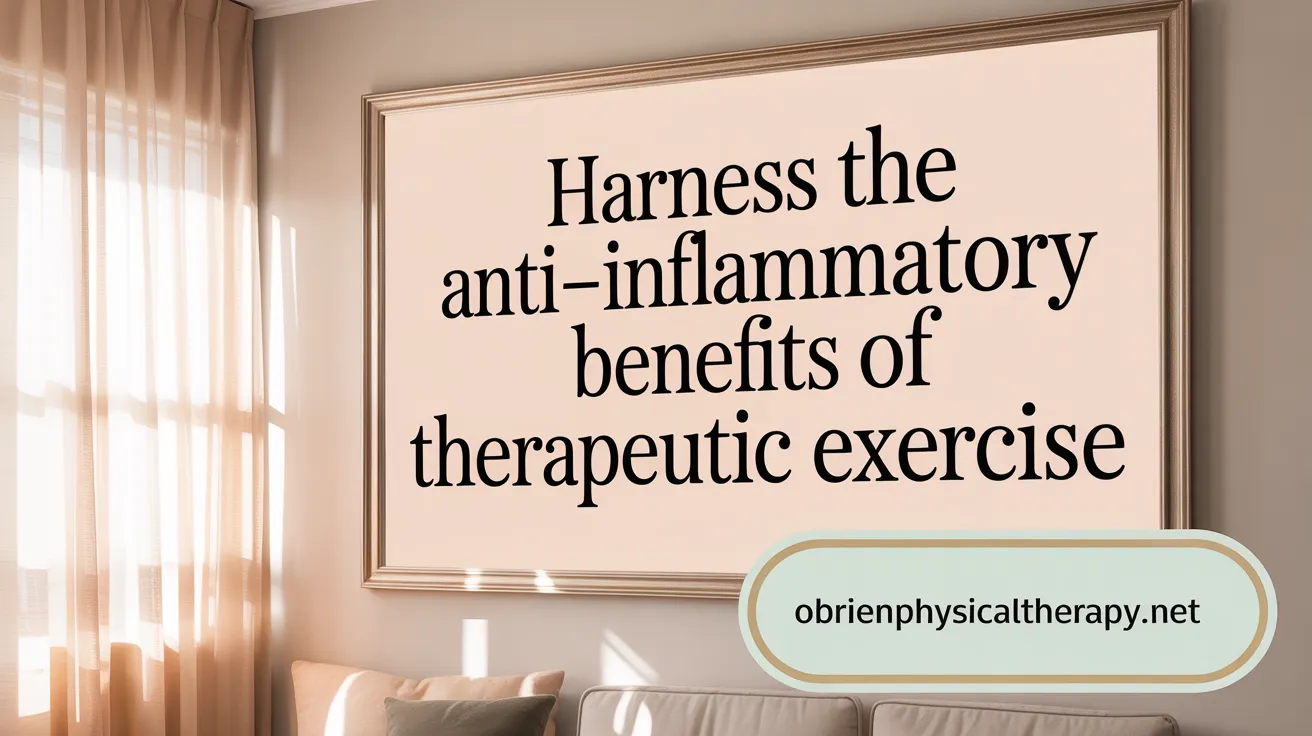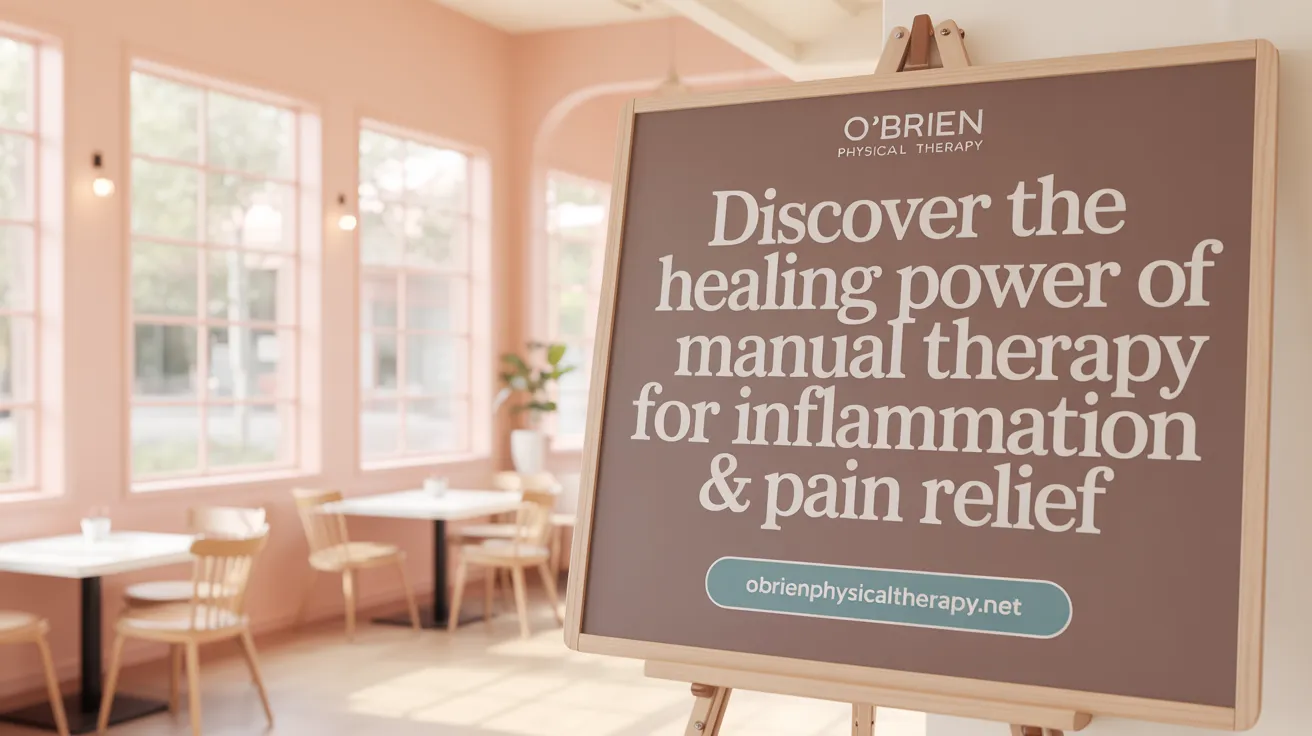Understanding Inflammation and Its Impact on Health
What Is Inflammation?
Inflammation is the body's natural response to injury, infection, or illness. It helps protect and repair tissues by activating immune defenses. There are two types: acute inflammation, which is short-term and aids healing, and chronic inflammation, which lasts longer and can negatively affect health.
Causes of Inflammation
Inflammation can be triggered by various factors such as stress, poor diet, allergens, pollution, lack of sleep, hormone imbalances, obesity, chronic infections, and family history. These can lead to persistent inflammation that may impair daily function.
Effects on the Body
While acute inflammation promotes healing, chronic inflammation may cause symptoms like swelling, pain, stiffness, and reduced mobility. It can also increase sensitivity to pain and delay recovery from injuries.
Why Managing Inflammation Matters
Controlling inflammation improves quality of life by reducing pain and promoting better joint and tissue function. Effective management includes physical therapy, proper nutrition, stress reduction, adequate sleep, and lifestyle choices that support healing and wellness.
Physical Therapy Techniques to Reduce Inflammation

What physical therapy methods help reduce inflammation?
Physical therapy uses several targeted techniques to reduce inflammation effectively and promote healing. Manual therapy, including soft tissue mobilization and joint mobilization, is a hands-on approach that improves movement and blood flow around affected tissues. By alleviating muscle tension and restoring joint mobility, manual therapy helps reduce pain and swelling.
Ice therapy, also known as cryotherapy, is applied to numb tissues and decrease pain and swelling, especially useful immediately following injury. This method complements other physical therapies by controlling inflammation and allowing tissues to heal.
Ultrasound therapy employs high-frequency sound waves to penetrate deep tissues, enhancing localized blood circulation and reducing swelling. This modality supports tissue repair in conditions such as tendonitis and osteoarthritis.
Therapeutic exercises are a cornerstone of inflammation management. Carefully tailored exercise programs involving aerobic, resistance, and flexibility exercises help reduce swelling, improve function, and prevent stiffness. These exercises stimulate anti-inflammatory responses and enhance joint mobility while avoiding exacerbation of inflammation.
Together, these physical therapy methods form a comprehensive approach to controlling inflammation, reducing pain, and restoring mobility to promote active, pain-free living.
The Anti-Inflammatory Power of Therapeutic Exercise

Types of exercises beneficial against inflammation
Moderate aerobic activities like walking, cycling, and swimming are well-recognized for their joint-friendly nature and ability to boost circulation. Resistance training strengthens muscles supporting inflamed joints, while flexibility exercises such as yoga and gentle stretching improve mobility and reduce stiffness. Movement therapies like Tai Chi and Pilates also complement these approaches by enhancing balance and reducing pain.
Exercise-induced anti-inflammatory mechanisms
Physical activity triggers the release of anti-inflammatory cytokines including IL-10 and IL-1ra, while simultaneously lowering pro-inflammatory cytokines such as TNFα. Skeletal muscles release myokines during contraction that stimulate immune regulation, decrease systemic inflammation, and promote antioxidant activity. Regular exercise reprograms immune and metabolic responses that attenuate chronic inflammation (effect of exercise training on chronic inflammation).
Exercise for chronic inflammatory conditions
Tailored exercise programs provide notable benefits for autoimmune and inflammatory diseases like rheumatoid arthritis and systemic lupus erythematosus. Exercise improves aerobic capacity, reduces fatigue and joint pain, and enhances overall quality of life. Consistent training can reduce markers of inflammation and assist in symptom control without worsening disease activity (Exercise therapy for rheumatoid arthritis).
Cautions in exercise prescription for inflammation
Exercise regimens should be carefully designed to prevent exacerbating inflammation or injury. Avoiding high-impact or excessive intensity activities is essential, especially during flare-ups. Gradual progression, pain monitoring, and supervision by physical therapists ensure appropriate dosing. Incorporating rest, flexibility, and low-impact cardiovascular exercises supports safe inflammation management (Physical Therapy Programs to Reduce Inflammation).
How does exercise help reduce inflammation?
Moderate aerobic, resistance, and flexibility exercises reduce systemic inflammation through immune modulation. They enhance anti-inflammatory cytokine production and decrease pro-inflammatory signals, improving circulation and joint function. Exercise alleviates pain and fatigue, especially benefiting chronic inflammatory disorders when personalized to each patient's needs (effect of exercise training on chronic inflammation.
Incorporating Stretching and Mind-Body Therapies for Inflammation Control
How do stretching and mind-body therapies help reduce inflammation?
Stretching plays a significant role in lowering inflammation by decreasing the levels of circulating proinflammatory cytokines in the body. It enhances blood flow, delivering oxygen and nutrients more efficiently to tissues, which supports healing and reduces swelling. By activating the parasympathetic nervous system, stretching helps lower stress hormones such as cortisol, which are known to elevate inflammation. This activation also promotes relaxation and pain relief through the release of endorphins. Improved posture and breathing resulting from regular stretching further support oxygen flow and reduce inflammatory responses (Stretching for inflammation relief).
What benefits do mind-body therapies provide for managing inflammation?
Mind-body therapies—including yoga, Tai Chi, Qigong, and meditation—offer holistic benefits for inflammation control. These practices engage both the mind and body to influence biological processes related to inflammation. They regulate neuroendocrine pathways, balancing the autonomic nervous system by decreasing sympathetic (stress-related) activity and increasing parasympathetic activity. This shift helps reduce inflammatory signaling molecules such as NF-κB and lowers production of inflammatory cytokines including IL-6 and TNF. Furthermore, these therapies help reduce perceived stress, anxiety, and loneliness, which can trigger inflammatory responses, thereby fostering physical and emotional well-being (Mind-body therapies for inflammation control).
What are the underlying mechanisms by which these therapies reduce inflammation?
From a psychoneuroimmunology perspective, mind-body therapies modulate gene expression related to inflammation, decreasing activity in proinflammatory genes and signaling pathways. They also affect brain regions responsible for threat detection and emotion regulation, such as the amygdala and prefrontal cortex, helping to control stress responses that otherwise exacerbate inflammation. Breathing exercises, meditation, and focused attention incorporated in these therapies actively engage the mind to create a cascade of physiological effects that diminish chronic inflammation (Mind-body therapies and inflammation.
Together, regular stretching combined with mind-body therapies provide a powerful, non-pharmacological approach to managing inflammation. They complement physical therapy and lifestyle changes, empowering patients to take an active role in reducing inflammation and enhancing overall health and quality of life (Physical Therapy Programs to Reduce Inflammation.
Lifestyle and Dietary Approaches Complementing Therapeutic Movement

How do lifestyle and diet support inflammation reduction alongside therapy?
Lifestyle and dietary choices play a crucial role in supporting inflammation reduction when combined with physical therapy. Adopting an anti-inflammatory diet helps manage chronic inflammation and promotes healing. This diet emphasizes foods rich in omega-3 fatty acids, such as fatty fish, along with vibrant fruits, vegetables, and dietary fiber. These components help reduce inflammatory responses and support immune function.
Avoiding pro-inflammatory foods is equally important. Patients are advised to limit or exclude trans fats, high fructose corn syrup, saturated fats, certain polyunsaturated oils, and fried foods, as these can exacerbate inflammation and delay recovery.
Beyond diet, other lifestyle factors are essential for comprehensive inflammation control. Adequate quality sleep (7–9 hours per night) aids in tissue repair and reduces circulating inflammatory substances. Effective stress management techniques, such as meditation or yoga, help lower stress hormones like cortisol that contribute to inflammation. Additionally, quitting smoking and minimizing exposure to allergens and environmental pollutants further reduce inflammatory triggers.
When combined with tailored physical therapy programs—including manual therapy, therapeutic exercise, and modalities like ultrasound therapy and cold therapy—these lifestyle modifications enhance treatment effectiveness. Physical therapists often encourage these holistic approaches to maximize recovery, improve function, and support a pain-free, active life.
Manual Therapy: Hands-On Strategies to Alleviate Inflammation and Pain

What Is Manual Therapy and Which Techniques Are Commonly Used?
Manual therapy is a hands-on treatment performed by licensed physical therapists targeting the root causes of pain and inflammation. It encompasses soft tissue mobilization, joint mobilization, myofascial release, and trigger point therapy]. Each technique focuses on improving tissue mobility, reducing tension, and restoring normal joint mechanics to support healing.
How Does Manual Therapy Affect Circulation, Muscle Spasms, and Joint Mobility?
Manual therapy increases blood flow to affected areas, delivering oxygen and nutrients essential for tissue repair while removing metabolic waste. It reduces muscle spasms and tension, promoting relaxation of tight tissues. By improving joint mobility through gentle mobilizations, manual therapy restores pain-free movement and enhances overall function. For more on these benefits, see Manual therapy for pain relief.
In What Ways Does Manual Therapy Reduce Pain and Inflammation?
By addressing soft tissue restrictions and joint stiffness, manual therapy decreases inflammatory swelling and promotes faster recovery. The techniques help inhibit pain signals through neurophysiological responses like endorphin release and modulation of muscle tone. This multimodal approach leads to both immediate pain relief and long-term improvements in inflammation management. Learn more about Manual therapy for inflammation reduction.
How Is Manual Therapy Integrated With Exercise and Other Physical Therapy Treatments?
Manual therapy is often combined with targeted therapeutic exercises, including stretching, strengthening, and aerobic activities tailored to individual needs. Additional modalities such as icing application and ultrasound therapy may be used alongside manual techniques to reduce swelling and pain further. This integrated approach empowers patients to regain mobility and function while effectively controlling inflammation.
| Aspect | Details | Benefits |
|---|---|---|
| Techniques | Soft tissue & joint mobilization, myofascial release] | Improves tissue and joint mobility |
| Circulation | Enhances blood flow to inflamed areas | Supports tissue healing |
| Muscle Spasms | Reduces tension and spasms | Eases pain and increases comfort |
| Pain & Inflammation | Modulates pain through neural pathways | Immediate relief and long-term control |
| Integration | Combined with exercise and modalities | Maximizes recovery outcomes |
Physical Therapy Modalities Supporting Therapeutic Movement
Which physical therapy modalities assist in managing inflammation?
Cold therapy, commonly referred to as icing, is widely used to reduce pain and swelling, especially immediately after injury. It works by numbing the affected tissues and decreasing muscle spasms, effectively controlling acute inflammation.
Heat therapy, on the other hand, increases blood flow and improves tissue flexibility. It helps alleviate stiffness, muscle spasms, and pain, making it beneficial for conditions like arthritis or chronic muscle tightness. Various forms such as hot packs, infrared heat, paraffin baths, hydrotherapy, and ultrasound can be applied depending on the depth and nature of the tissue involved.
Electrical stimulation therapies, such as Transcutaneous Electrical Nerve Stimulation (TENS), provide pain relief by sending low-voltage electrical currents that modulate pain perception and can prevent muscle atrophy in conditions where nerve input is reduced.
Traction is often used to relieve chronic neck or spinal pain by gently stretching the spine, which can help reduce nerve compression and improve mobility when used alongside other therapeutic exercises.
Massage therapy, a form of manual therapy, reduces swelling, loosens tight muscles, and alleviates pain. It is especially helpful for soft tissue injuries and muscular tension but must be performed by licensed therapists to ensure safety.
Acupuncture, involving the insertion of fine needles at specific body points, may stimulate the production of endorphins, helping to block pain signals and reduce inflammation. It is commonly used as a complementary therapy alongside physical therapy.
Safety and Application Considerations
These physical therapy modalities should be applied cautiously under professional supervision to avoid potential tissue damage. For example, cold therapy must be used carefully to prevent frostbite, and heat therapy should avoid areas with impaired sensation or implanted metal devices. Electrical stimulation and traction are best administered by trained therapists to tailor treatments effectively and minimize risks. Massage should be avoided in cases of infection or blood clots. Acupuncture must be performed by certified practitioners to ensure safe technique.
Incorporating these modalities as part of an individualized physical therapy program can effectively control inflammation, reduce pain, and support functional recovery, empowering patients toward active, pain-free living.
Implementing Therapeutic Movement in Chronic Inflammatory Conditions
How is therapeutic movement used for chronic inflammation and autoimmune diseases?
Therapeutic movement plays a crucial role in managing chronic inflammation, especially in autoimmune diseases such as rheumatoid arthritis. It includes aerobic exercises (like walking and swimming) and resistance training tailored to the individual's condition. These exercises help reduce inflammatory markers by stimulating the production of anti-inflammatory cytokines such as IL-6 and IL-10 from muscles during contraction.
Physical therapy focuses on designing personalized and progressive exercise programs that improve muscle strength, joint function, and aerobic capacity without triggering inflammatory flare-ups. These exercise plans typically incorporate low-impact aerobic activities, gentle stretching for flexibility, and strengthening routines to stabilize affected joints.
Role of physical therapy in managing chronic inflammation
Physical therapists use a combination of manual therapy techniques (Manual therapy, therapeutic exercise, and modalities (e.g., ultrasound and cold therapy) to reduce swelling, pain, and stiffness. They assess posture, muscle imbalances, and joint mechanics to prescribe exercises that promote blood flow and decrease systemic inflammation.
Physical therapy also addresses lifestyle factors by advising on nutrition, sleep, and stress reduction, providing a holistic plan to control inflammation and enhance recovery.
Importance of tailored and progressive exercise plans
Because inflammation varies among individuals, exercise regimens are carefully tailored to avoid exacerbating symptoms. Sessions generally feature gradual progressions in intensity and duration to prevent overuse. Monitoring patient response allows therapists to adjust activities and ensure safety while maximizing anti-inflammatory benefits.
Education and self-management strategies
Education empowers patients to understand their condition and recognize early signs of inflammation. Physical therapists teach proper movement mechanics and pacing strategies to maintain activity while minimizing pain and stiffness. Self-management tools include home exercises, lifestyle modifications, and relaxation techniques such as yoga and meditation that complement physical therapy to reduce stress-induced inflammation.
Through an integrated approach combining therapeutic movement and education, patients with chronic inflammatory and autoimmune diseases can better manage symptoms, improve function, and maintain a pain-free, active lifestyle.
Enhancing Recovery and Well-Being through Therapeutic Movement and Lifestyle Integration
Therapeutic Movement Benefits
Therapeutic movement, including physical therapy exercises, yoga, stretching, and low-impact aerobics, plays a vital role in reducing inflammation and pain. These activities improve blood flow, increase joint mobility, and decrease stiffness. Regular, tailored exercise promotes the release of anti-inflammatory cytokines and endorphins, which reduce pain perception and support tissue healing.
Combining Physical Therapy with Lifestyle Changes
Addressing inflammation effectively requires an integrated approach. Alongside physical therapy, lifestyle modifications such as adopting an anti-inflammatory diet rich in omega-3 fatty acids, managing stress, ensuring adequate sleep, and avoiding environmental triggers like allergens and pollution are crucial. This synergy optimizes recovery and prevents chronic inflammation.
Empowering Patients for Sustained Health
Educating and empowering patients to engage in consistent therapeutic movement and healthy lifestyle habits fosters long-term inflammation control. Personalized exercise programs and guidance on nutrition and stress management enable individuals to actively maintain their well-being, reduce pain, and enhance physical function for a more active, pain-free life.
